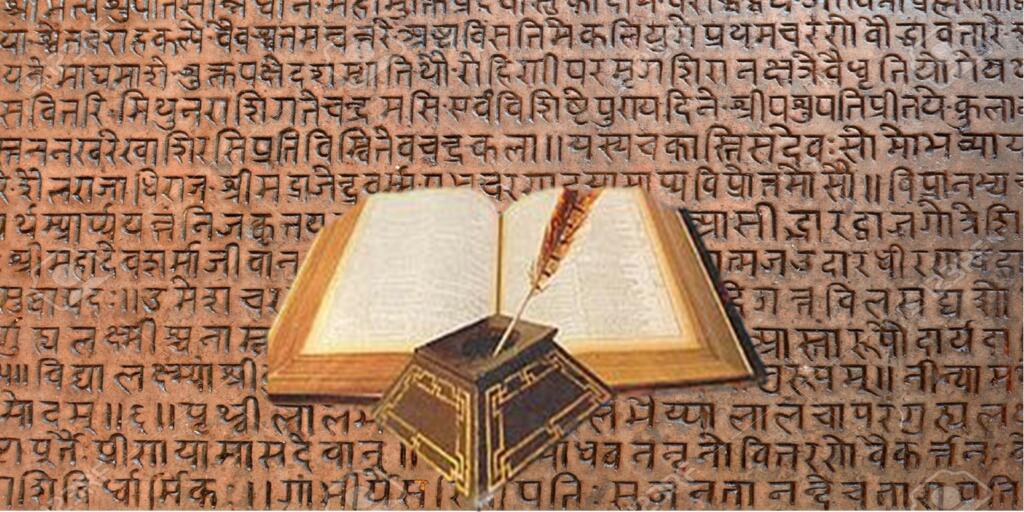Language is the cradle on which civilization grows. Without language, people would not interact on friendly terms, leading to an increase in violent conflicts. Any country wishing to protect its civilisational ethos must begin by doing so with its language. That is why creating a dictionary of Sanskrit holds significant importance for India.
Deep research on Sanskrit lexicon
In 1948, department of Sanskrit and Lexicography, Deccan college, Pune, started a project called ‘An encyclopaedic dictionary of Sanskrit’. Dr Sumitra Mangesh Katre, a renowned Indologist and linguist was the leader of the project. Dr. Sumitra also served as first General editor of the Sanskrit dictionary. Later, Prof. AM Ghatge took on the bation from him.
For the first 25 years of the project, Sanskrit textbooks available in India were hunted. Pandits, shastris and scholars brainstormed over nearly 1,500 Sanskrit literatures. The domain of these textbooks is spread over 62 knowledge disciplines such as Vedas, Darśana, Sahitya, Dharmaśāstra, Vedānga, Vyakarana, Tantra, Epics, Mathematics, Architecture, Alchemy, Medicine, Veterinary Science, Agriculture, Music, Inscriptions, In-door games, warfare, polity and anthology among others. These textbooks were written in wide time frame, from the Vedic period to Hāsyārṇava (1850 AD).
Clarity about historical development
Due diligence was followed before publishing the Sanskrit dictionary. In 1976, the first volume of the Sanskrit dictionary was published. The dictionary contains words in alphabetical order. Historic precedents are followed in describing the meaning. Not only does it describe meaning, but it also provides additional information, references, and context of the respective word. Due care has been taken to arrange words according to the chronological order of their reference in the text.
Any word beginning with a particular letter contains all the citations present in Sanskrit texts. These citations can be as old as thousands of years old and can be as young as a text published 170 years ago. By tracking the development of the meaning of the word across epochs, a learner can understand how the language was shaped by the social, cultural and moral system of the time.
Sarika Mishra, an Editorial assistant on the project, said, “Sometimes, a word can have anywhere between 20 to 25 meanings as it varies depending on the context of use and books. Once the maximum possible meanings are found, the first draft, called an article, is published. This is then proof-read and sent to the General Editor for his first review. Upon finalising, the article of one word is readied and sent to the press. It is once again proof-read by the scholars and the General Editor, before it is finalised as a dictionary entry.”
Also Read: Intellectuals had you believe that Sanskrit was a language of the elites. They were wrong
Better than Oxford
Up until now, 35 volumes of the coveted Sanskrit dictionary have been published. The process has largely been helped by an exclusive software with a font named KoshaSHRI. 1.25 lakh vocables have been subsumed in these volumes. Apparently, the Sanskrit alphabet ‘अ ‘ has given birth to highest number of these words. 6,056 pages of the words in the Dictionary starts with this particular alphabet only. By the end, the project will finish, it is expected that it will contain a total vocabulary of 20 lakh words.
For context, the Oxford English Dictionary has 20 volumes and 2,91,500-words entries so far. Given the fact that Sanskrit language contains 46 letters, 20 more than the number of alphabets in the English dictionary, it won’t be surprise if the number surpasses more than 20 lakh words.
Example of human endurance
The process was really a painstaking one. These scholars generated a reference slip for each and every small detail. These slips contain book title, context of the word, grammatical category, citation, commentary, reference, exact abbreviation, and date of the text. These references have been signed by their creator and have been kept in 3,057 specially designed metal drawers. Around 20 million slips are there and these drawers are now open for the public to see.
The project is a prime example of how human endurance can achieve everything. India has a history of such miracles. The very fact that Nalanda University kept burning for six months is an example of how much effort was put into building it. Let us hope the digitisation process of this encyclopaedia is not subject to censorship by the big-tech.
Support TFI:
Support us to strengthen the ‘Right’ ideology of cultural nationalism by purchasing the best quality garments from TFI-STORE.COM
